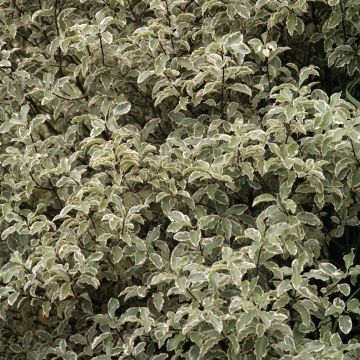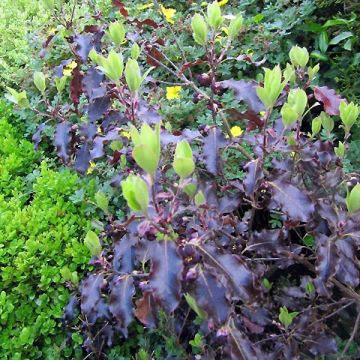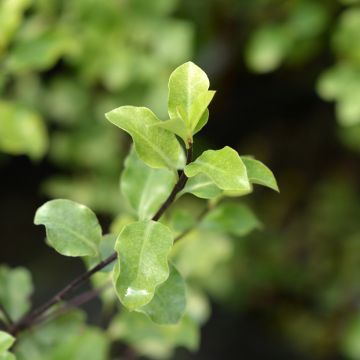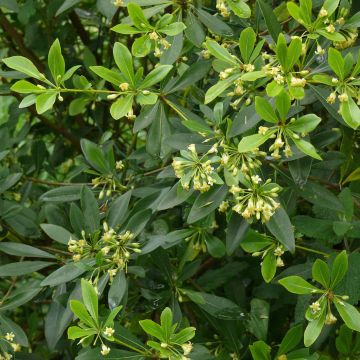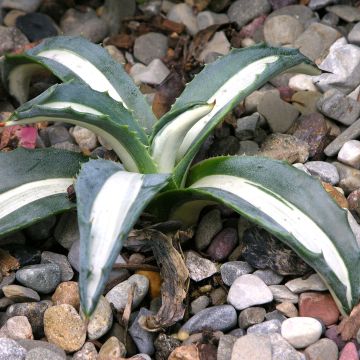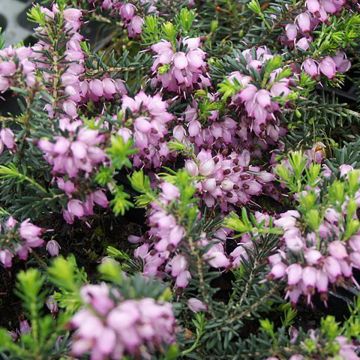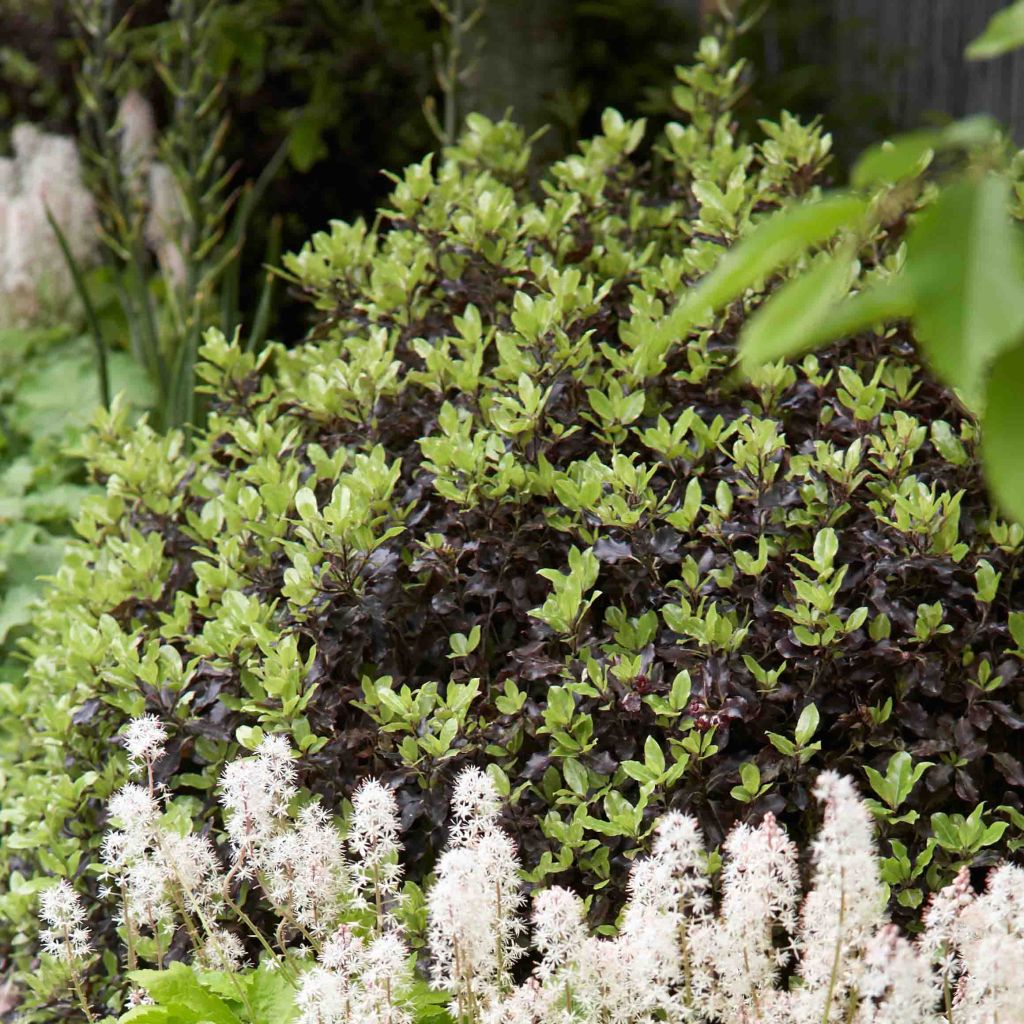

Pittosporum tenuifolium Tom Thumb - Kohuhu
Pittosporum tenuifolium Tom Thumb - Kohuhu
Pittosporum tenuifolium Tom Thumb
Tawhiwhi, Kohuhu, Black Matipo, New Zealand Pittosporum
Big disappointment upon receipt: very dull, sparse, dry branches, far from the image of the beautiful evergreen expected. I rely on PDF's responsiveness to remedy the poor quality of this bush paid for €49.
Christelle, 29/10/2023
This item cannot be shipped to the selected country
Delivery charge from €5.90
Delivery charge from €5.90
More information
Schedule delivery date,
and select date in basket
This plant carries a 24 months recovery warranty
More information
We guarantee the quality of our plants for a full growing cycle, and will replace at our expense any plant that fails to recover under normal climatic and planting conditions.
From €5.90 for pickup delivery and €6.90 for home delivery
Express home delivery from €8.90.
From €5.90 for pickup delivery and €6.90 for home delivery
Express home delivery from €8.90.

Does this plant fit my garden?
Set up your Plantfit profile →
Description
Pittosporum tenuifolium Thom Thumb is a beautiful, sturdy shrub that is slightly sensitive to cold, and originates from New Zealand. It stands out for its very dense, beautiful evergreen foliage. Its small, tough and undulate leaves have a dark, intense bronzy-purple hue with metallic reflections. In May-June, during warm nights, its small dark red flowers release an intense scent of honey and vanilla. This plant has the charm of plants from distant arid lands. It is perfectly adapted to the Mediterranean climate and will thrive in sunny positions with well-drained soil.
This shrub, part of the Pittosporaceae family, originates from dry regions located to the east of the New Zealand Alps. Over time, it forms a dense and sturdy bush, 50 to 80 cm (20 to 32in) tall, with a spread of 1 m (3ft). Its black and branching stems hold evergreen, alternate, entire, ovate, thick, very glossy, tough, undulate leaves. They are small, not exceeding 3 to 4 cm (1 to 2in) in length and 1.5 to 2 cm (1in) in width. They emerge as an almond green shade, then turn bronze, purple and chocolate, glazed with a magnificent silver reflection. Flowering takes place in late spring or early summer. The small cup-shaped flowers, almost black in colour and less than 1 cm (1in) in diameter, release a scent that is especially noticeable at night. They are followed by the formation of a few round fruits, initially green and then almost black when mature.
Hardy down to -7C°/-10°C, Pittosporum Thom Thumb requires a dry, not too chalky, well-drained soil and a warm, sunny position protected from prevailing winds. It is recommended to grow it in a pot in regions where the winter is very cold. In mild climates, it can be planted in rockeries or at the edge of flower beds. In colder regions, it can be grown in a container on a terrace to enjoy its delicate scent and Mediterranean charm. Accompany it with perennial geraniums, lavender, rosemary, Grevillea, Escallonia, or combine it with the silver foliage of Artemisia.
Report an error about the product description
Pittosporum tenuifolium Tom Thumb - Kohuhu in pictures


Plant habit
Flowering
Foliage
Botanical data
Pittosporum
tenuifolium
Tom Thumb
Pittosporaceae
Tawhiwhi, Kohuhu, Black Matipo, New Zealand Pittosporum
Cultivar or hybrid
Other Pittosporum
Planting and care
Pittosporum Thom Thumb should preferably be planted in spring in a cold climate, or in September-October in mild climate. Plant it in a fertile, dry, not too chalky and well-drained soil. At planting, mix leaf compost and coarse sand with your garden soil, up to 50%. Water your plant well once or twice a week to promote good root growth. Not very hardy , to -7°C (19.4°F), choose a warm location, in full sun which is sheltered from prevailing winds. Keep the base of the plant mulched. Plant it along a south-facing wall in regions with harsh winters. In cooler climates, cover it with a winter veil or shelter it in a frost-free conservatory for the winter season. To help it branch out during the first years of planting, pinch the young shoots. Prune mature plants at the end of the season, removing the branches that appear untidy. It is entirely possible to shape it into a ball or a hedge, as it tolerates pruning well.
Planting period
Intended location
Care
-
, onOrder confirmed
Reply from on Promesse de fleurs
Evergreen shrubs
Haven't found what you were looking for?
Hardiness is the lowest winter temperature a plant can endure without suffering serious damage or even dying. However, hardiness is affected by location (a sheltered area, such as a patio), protection (winter cover) and soil type (hardiness is improved by well-drained soil).

Photo Sharing Terms & Conditions
In order to encourage gardeners to interact and share their experiences, Promesse de fleurs offers various media enabling content to be uploaded onto its Site - in particular via the ‘Photo sharing’ module.
The User agrees to refrain from:
- Posting any content that is illegal, prejudicial, insulting, racist, inciteful to hatred, revisionist, contrary to public decency, that infringes on privacy or on the privacy rights of third parties, in particular the publicity rights of persons and goods, intellectual property rights, or the right to privacy.
- Submitting content on behalf of a third party;
- Impersonate the identity of a third party and/or publish any personal information about a third party;
In general, the User undertakes to refrain from any unethical behaviour.
All Content (in particular text, comments, files, images, photos, videos, creative works, etc.), which may be subject to property or intellectual property rights, image or other private rights, shall remain the property of the User, subject to the limited rights granted by the terms of the licence granted by Promesse de fleurs as stated below. Users are at liberty to publish or not to publish such Content on the Site, notably via the ‘Photo Sharing’ facility, and accept that this Content shall be made public and freely accessible, notably on the Internet.
Users further acknowledge, undertake to have ,and guarantee that they hold all necessary rights and permissions to publish such material on the Site, in particular with regard to the legislation in force pertaining to any privacy, property, intellectual property, image, or contractual rights, or rights of any other nature. By publishing such Content on the Site, Users acknowledge accepting full liability as publishers of the Content within the meaning of the law, and grant Promesse de fleurs, free of charge, an inclusive, worldwide licence for the said Content for the entire duration of its publication, including all reproduction, representation, up/downloading, displaying, performing, transmission, and storage rights.
Users also grant permission for their name to be linked to the Content and accept that this link may not always be made available.
By engaging in posting material, Users consent to their Content becoming automatically accessible on the Internet, in particular on other sites and/or blogs and/or web pages of the Promesse de fleurs site, including in particular social pages and the Promesse de fleurs catalogue.
Users may secure the removal of entrusted content free of charge by issuing a simple request via our contact form.
The flowering period indicated on our website applies to countries and regions located in USDA zone 8 (France, the United Kingdom, Ireland, the Netherlands, etc.)
It will vary according to where you live:
- In zones 9 to 10 (Italy, Spain, Greece, etc.), flowering will occur about 2 to 4 weeks earlier.
- In zones 6 to 7 (Germany, Poland, Slovenia, and lower mountainous regions), flowering will be delayed by 2 to 3 weeks.
- In zone 5 (Central Europe, Scandinavia), blooming will be delayed by 3 to 5 weeks.
In temperate climates, pruning of spring-flowering shrubs (forsythia, spireas, etc.) should be done just after flowering.
Pruning of summer-flowering shrubs (Indian Lilac, Perovskia, etc.) can be done in winter or spring.
In cold regions as well as with frost-sensitive plants, avoid pruning too early when severe frosts may still occur.
The planting period indicated on our website applies to countries and regions located in USDA zone 8 (France, United Kingdom, Ireland, Netherlands).
It will vary according to where you live:
- In Mediterranean zones (Marseille, Madrid, Milan, etc.), autumn and winter are the best planting periods.
- In continental zones (Strasbourg, Munich, Vienna, etc.), delay planting by 2 to 3 weeks in spring and bring it forward by 2 to 4 weeks in autumn.
- In mountainous regions (the Alps, Pyrenees, Carpathians, etc.), it is best to plant in late spring (May-June) or late summer (August-September).
The harvesting period indicated on our website applies to countries and regions in USDA zone 8 (France, England, Ireland, the Netherlands).
In colder areas (Scandinavia, Poland, Austria...) fruit and vegetable harvests are likely to be delayed by 3-4 weeks.
In warmer areas (Italy, Spain, Greece, etc.), harvesting will probably take place earlier, depending on weather conditions.
The sowing periods indicated on our website apply to countries and regions within USDA Zone 8 (France, UK, Ireland, Netherlands).
In colder areas (Scandinavia, Poland, Austria...), delay any outdoor sowing by 3-4 weeks, or sow under glass.
In warmer climes (Italy, Spain, Greece, etc.), bring outdoor sowing forward by a few weeks.

































